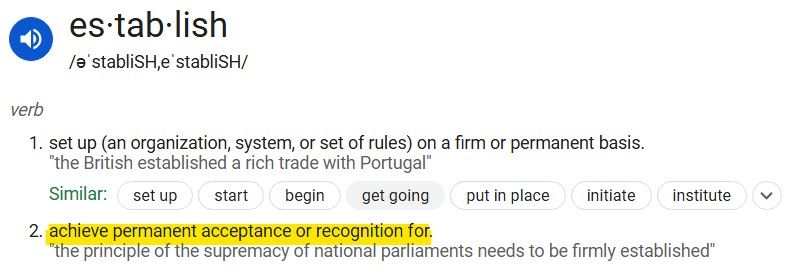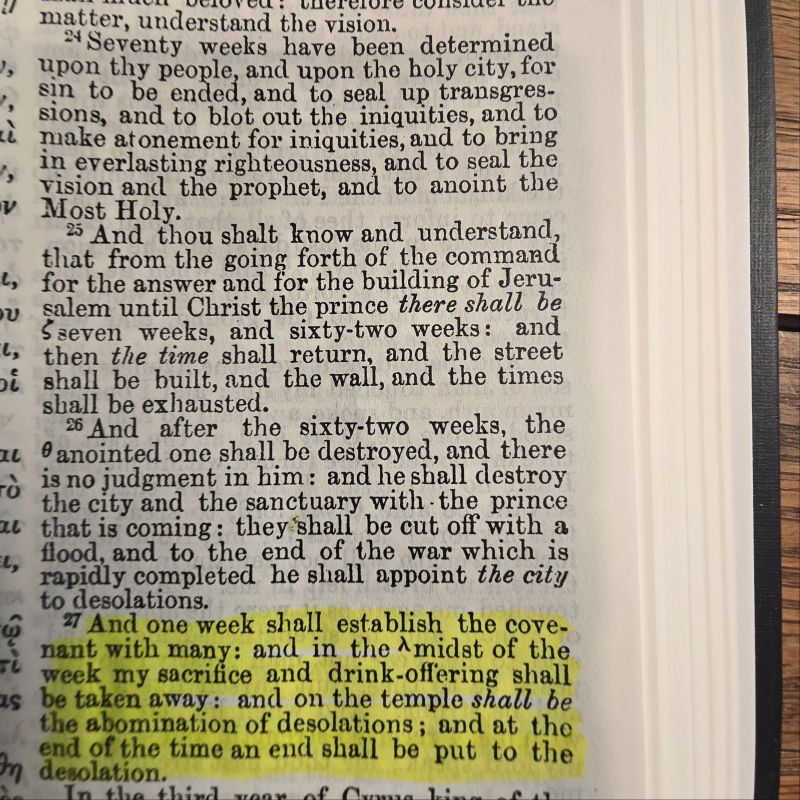Greek Septuagint
Here is the Greek Septuagint translation of these verses.
The Structure of the Prophecy
Get out your Bible and history books and lets get started!
Daniel 9:24-27 states:
Seventy weeks are determined for your people and for your holy city... to bring in everlasting righteousness, to seal up vision and prophecy, and to anoint the Most Holy.
This prophecy is broken into three segments:
Seven weeks (49 years)
Sixty-two weeks (434 years)
One final week (7 years)
Each “week” represents seven years (based on the Jewish system of a seven-year sabbatical cycle). Thus, 70 weeks equals 490 years.
The 69 Weeks (483 Years) Leading to the Messiah
Starting Point: The Decree to Rebuild Jerusalem
Daniel 9:25 gives the beginning of this prophetic timeline:
From the issuing of the decree to restore and rebuild Jerusalem until Messiah the Prince, there shall be seven weeks and sixty-two weeks.
Historical records show that the Persian king Artaxerxes I Longimanus issued a decree to rebuild Jerusalem in 457BC(Nehemiah 2:1-8). This decree marks the starting point of the prophecy.
Calculation of 69 Weeks
69 weeks = 7 + 62 weeks = 69 x 7 years = 483 years.
The Biblical prophetic calendar is based on 360-day years (as seen in Genesis 7 and Revelation 11:2-3).
483 prophetic years = 173,880 days.
Using this calculation:
If we count 173,880 days from 457 BC, we do not count the year 0, we arrive at 27 AD, which coincides with the time of Jesus’ started His ministry and the FINAL WEEK 7 years. This perfectly fulfills the prophecy
The Messiah Will Be “Cut Off”
Daniel 9:26 states:
After the sixty-two weeks, Messiah shall be cut off, but not for Himself.
This refers to Jesus' crucifixion, which occurred shortly after His triumphant entry.
The Confusion
So there are many Christians and other people out there that are misunderstanding. There are a lot of teachers out there saying that the one who makes the covenant with the many is the anti-christ. However, they are mistaken as I use to be. This just goes to show that we should examine Bible Scripture closely. I should reiterate, it is OK to be wrong, it is just not OK to be wrong when the truth is right in front of your eyes.
Clear Explanation
The phrase “He shall confirm the covenant” refers to Christ. There is much debate about this, however, this is a covenant that is already in place between God and Abraham. In the Greek Septuagint we see the word is translated as "Establish a covenant" which would also work in this context.

However, "confirm", or "fulfill" might be a better word these days. In several places in the Bible, Christ is shown as the one who confirms or fulfills God’s covenant:
- Isaiah 42:6 – God says, “I will make you a covenant for the people,” meaning Christ represents the covenant between God and Israel.
- Luke 22:20 – Jesus calls His sacrifice “the new covenant in My blood.”
- Malachi 3:1 – He is called “the messenger of the covenant.”
- Jeremiah 31:31–34 – This passage describes the new covenant brought by the Messiah.
This prophecy about the Messiah confirming the covenant would give hope to the faithful during the time of Antiochus, a ruler who persecuted the Jews and was seen as a foreshadowing of the Antichrist. This is why the language in Daniel 9:27 is similar to that in Daniel 11:30, 32, where people are said to “forsake the covenant” or “act wickedly against the covenant.”
The prophecy says the Messiah would confirm the covenant “for one week” (seven years), but in the middle of that week, He would bring an end to sacrifices. This aligns with Christ’s crucifixion, which occurred around 30 AD. Although Jerusalem wasn’t destroyed until 79 AD, the nation of Israel was essentially judged in 30 AD, shortly after Christ’s death. During the next few years, the Gospel was preached only to the Jews. But when they rejected it by stoning Stephen (Acts 7:54–60), the grace period ended, fulfilling the warning in Luke 13:7–9. This of course wrapped up the final week in Daniel 9:27 when he set the Church up ending in 34AD.
From that point on, Israel was considered spiritually dead because they rejected Christ. The physical destruction of Jerusalem by the Roman general Titus was the final sign that the kingdom of God was now given to the Gentiles (Matthew 21:43).
Conclusion
Cyrus’ decree started the process of bringing the Jews back to their homeland after the Babylonian exile. This process continued over time and reached an important milestone in 457 BC when King Artaxerxes I allowed the rebuilding of Jerusalem’s city infrastructure and defenses.
The “weeks” mentioned in Daniel 9 were understood by ancient Jews as cycles of sabbatical years, which were tied to agricultural seasons and always counted from the month of Tishri. These cycles could only be observed when Jews were living in Judea, so the counting had to restart after the exile. Since restoring Jerusalem also involved spiritual renewal, Ezra’s work was part of fulfilling Daniel 9:25, and the return from exile wasn’t complete until Ezra and his group arrived. Since Ezra left for Judea in the spring of 457 BC, Artaxerxes’ decree was likely issued in the winter of 457 BC. Therefore, the earliest the sabbatical year cycles could have restarted was Tishri 1, 457 BC.
This conclusion is supported by a detailed study of the sabbatical year cycles. Some historians defend Wacholder’s calendar, but their arguments rely on a problematic translation and overlook practical challenges noted by other scholars. On the other hand, Zuckermann’s pattern of sabbatical years resolves these issues, making it the more reliable choice.
The first sabbatical cycle after Ezra’s return began in Tishri 457 BC and ended in Elul 456 BC. The first sabbatical year in this new cycle was the seventh year, from Tishri 1, 451 BC to Elul 29, 450 BC, which aligns perfectly with Zuckermann’s pattern. This suggests that the “sevens” in Daniel 9:25 refer to sabbatical year cycles, not just seven-year periods.
Therefore, the counting of Daniel’s Seventy Weeks began on Tishri 1, 457 BC. This understanding will help in interpreting the rest of Daniel 9:24–27.
One final thought: The modern State of Israel follows Zuckermann’s pattern for sabbatical years. If we believe that God guides historical events, including influencing the adoption of Zuckermann’s pattern, and if we expect sabbatical years to have prophetic importance, then this gives us a practical reason to accept Zuckermann’s approach to sabbatical year cycles.
#prophecy #theElect #endureToEnd #theElect #messiah2030 #messiah2033 #thegreattribulation

